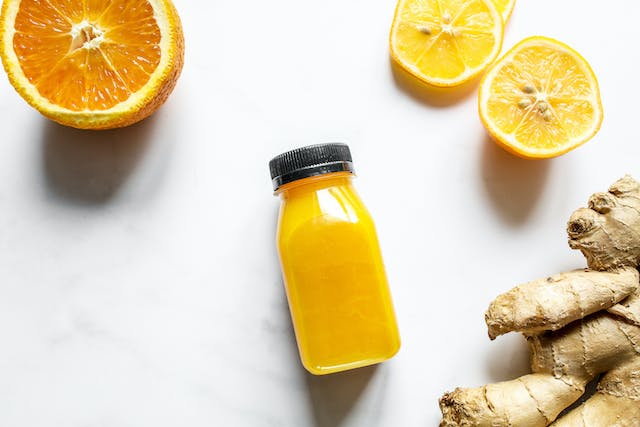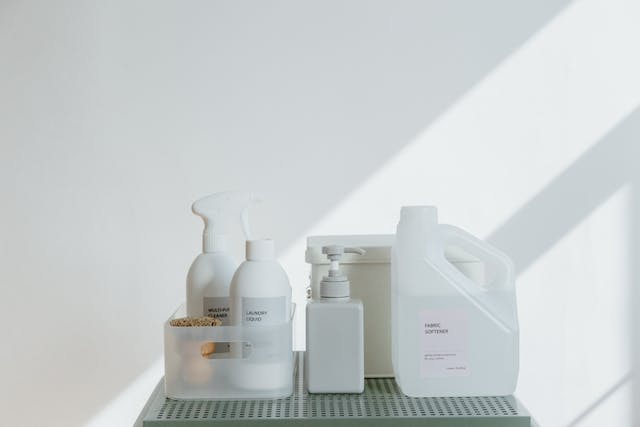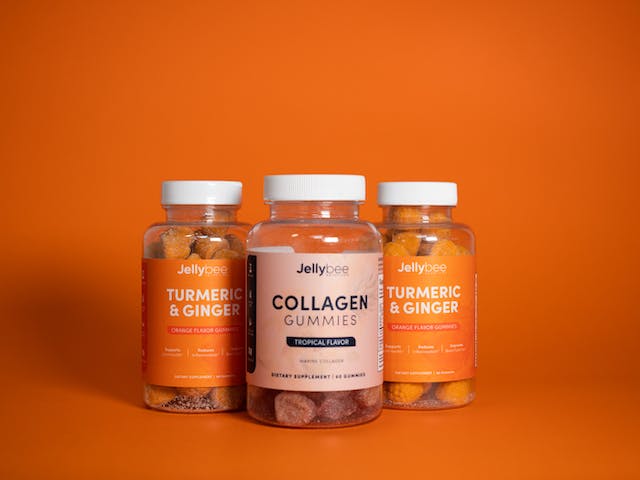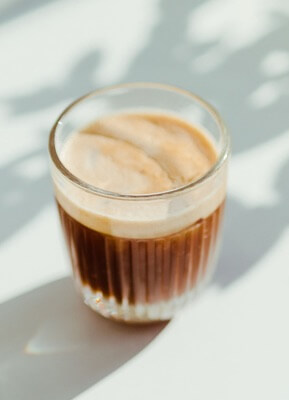PET is the most commonly used beverage packaging material today. Because PET can be easily made into finished products by rapid cooling. It is amorphous, has high transparency, and is easy to stretch. So, PET is usually used as packaging material. PET can be made into biaxially stretched packaging film (please check here for more information). High-strength, high transparency stretch-blow molded bottles can be obtained from amorphous bottle preforms. Besides, it can be directly extruded or blow molded into hollow containers derived from unstretched PET bottles. PET hollow containers, especially stretch blow molded bottles, give full play to the performance of PET. It has a good display effect on the content. Performance and cost are comparable to other hollow containers. So, when PET is used as packaging material, it is basic stretch blow molding. The most usually used bottles are small bottles, with capacities ranging from tens of milliliters to 2 liters. There are also large bottles with a capacity of 30 liters.
Since the early 1980s, it has been easy to mass produce due to its lightweight, easy molding, and low price. In just about 20 years, it has developed into the most important form of beverage packaging in the world. It is not only used in the packaging of carbonated drinks, bottled water, condiments, cosmetics, alcohol, dried fruit candies, and other products. Special treated hot-fill bottles can also be used to package juice and tea drinks. PET beer bottle processing and PET bottle aseptic filling are also booming. Technological progress is continuously expanding the application fields of PET bottles.
The production process of PET bottle-grade chips is mainly divided into two parts. The first part is the production of basic chips, that is, polyester production. The process for producing bottle-grade basic slices is basically the same as producing regular slices. At the same time, the third monomer IPA and some additives are added to meet some bottle-level slice performance. The second part is the solid phase adhesion of the basic slices.
1. IPA and DEG Content
The levels of IPA and DEG in finished slices are controlled during the production of basic slices. During the process of solid phase viscosity increasing, their contents remain basically unchanged.
The amount of IPA is critical to thickening the slices. The purpose of adding IPA is to reduce a certain regularity in the arrangement of PET macromolecules. Thereby reducing the crystallization properties of the slices. First, it can improve the processing performance during injection molding and bottle blowing. It also reduces the processing temperature. Second, it can increase the transparency of preforms and bottles. However, the addition of IPA lowers the softening point and melting point of PET. The produced bottles have poor temperature resistance and reduced mechanical strength. So, the content of IPA must be appropriately adjusted and strictly controlled according to market requirements. Besides, the IPA content also has a certain impact on solid-phase polycondensation. If the IPA content is inappropriate. For example, if the content is too high, it will lead to incomplete crystallization of the slices in the pre-crystallization and crystallizer. This ultimately results in the slices sticking together during the thickening process.

2. Diethylene Glycol
The content of diethylene glycol is generally determined by the production process. Minor adjustments can be made by adjusting the formula ratio (such as adjusting the ratio of EG and PTA). The diethylene glycol content of bottle-grade slices currently produced on the market is approximately 1.1% ± 0.2% (weight percentage). Within this range, a higher diethylene glycol content is beneficial to improving the heat resistance of the slices. Because the ether bond in diethylene glycol has a certain degree of flexibility. It can increase the crystallization speed of PET. But this content should not be too high. Because the existence of ether bonds reduces the rigidity of PET molecules and lowers the melting point of PET. It is easy to cause adhesion during the thickening process of slices. If the content is too high, it will also reduce the mechanical properties during slice blowing.
3. Carboxyl End Groups
Under certain other conditions, the high content of terminal carboxyl groups is beneficial to increase the reaction speed. It can be seen from the SSP reaction equation. One is a transesterification reaction and the other is an esterification reaction. High terminal carboxyl group content is beneficial to the esterification reaction between PET chains. And it increases the reaction rate. In PET slices, the increase in H+ concentration is also beneficial to the autocatalysis of the catalyst. However, the increase in terminal carboxyl group content will affect the post-processing properties of slices. So, the terminal carboxyl groups of the basic slices need to be controlled within a certain range. Generally, it is 30~40mol/t, and the carboxyl group of bottle-grade slices is [30mol/t].
4. Process Parameters of Pre-Crystallizer and Crystallizer
Generally, the pre-crystallizer temperature is set to 145~150℃. If the temperature is too low, water molecules in the slices are difficult to remove in the form of crystal water. This causes the slices to crystallize too slowly. Crystallization in a short period will be insufficient. It cannot meet production needs. But the crystallization temperature cannot be too high. Because as the temperature increases. The air in the slices, pre-crystallizer, and crystallizer is prone to oxidative degradation. Thereby affecting the color value of the product.
Usually, the crystallizer temperature is set at 170~175℃. If the temperature is above 175°C. The color values increased significantly as the residence time of the slices in the pre-crystallizer and crystallizer increased. There is little change in crystallinity. Of course, in actual production, a better b value cannot be obtained through excessive cooling. If the temperature is low, the slices will not crystallize sufficiently. This can cause the slices to stick during subsequent preheaters and reactors. Crystal water is also difficult to remove. This will affect the viscose effect of the slices. These all affect the intrinsic quality of the finished slices. Only by producing good crystal slices can we get good viscose slices. Well-crystallized slices mainly mean that the crystallinity of the slices reaches a certain value. For example, the crystallinity at the outlet of the pre-crystallizer is ≥30%, the crystallinity at the outlet of the crystallizer is ≥40%, and the crystallinity at the outlet of the preheater is ≥45%. Otherwise, it will cause the slices to stick during the bonding process. Another point is that the surface of the slice must be crystallized evenly.

5. Process Parameters of Pre-Heater and Reactor
The preheater and reactor processes increase the viscosity of the slices to varying degrees. Two factors affect the thermodynamics and kinetics of solid-phase polycondensation reactions. The first is the temperature of the reaction and the extent to which small molecular byproducts diffuse out of the slice. The second factor depends on the nitrogen heating control temperature.
The impact of temperature on the reaction has both positive and negative aspects. On the positive side, viscosity increases. Elevated temperatures can enhance reaction rates and improve the production capacity of the equipment. When the output is constant, an increased viscosity range can also be beneficial. Yet, the increase in temperature is accompanied by an increase in side reactions. It can affect the quality indicators of the product. So, in practical production, it is essential to find the appropriate temperature.
In this apparatus, the actual determinant of the reactor temperature is the outlet temperature of the preheater. By adjusting the preheater outlet temperature and the flow rate of cooling nitrogen at the bottom of the preheater, the reactor temperature can be controlled. As the reactor’s inlet temperature gradually decreases, the system reaction also slows down. Changing once and stabilizing the reactor residence time at least twice is necessary. Meanwhile, the corresponding changes in the viscosity value of the final product also require time. Otherwise, the response rate will vary. It leads to uneven slice thickness, which can impact the subsequent processing performance of the slices.
The second factor depends on the nitrogen flow rate during the reaction process and the specific surface area of the slices. On one hand, nitrogen serves as a heating medium, especially in the preheater. However, it also acts as a medium to carry away small molecular by-products. As mentioned earlier, the small molecular by-products generated by solid-phase polymerization exit the slices through two processes. The process of diffusion from the surface of the slices is related to the nitrogen flow rate and temperature.
The nitrogen and slice flow in opposite directions. It can enhance the heating effect and carry away small molecular by-products. Adopting bottom nitrogen heating and mid-nitrogen circulation heating ensures uniform heating without dead spots. In the reactor, because at its bottom, the slices are under higher pressure. So, the bottom inlet air temperature is controlled at a lower temperature of around 190 degrees. It makes the slices less prone to sticking.
As a heating medium, the nitrogen flow rate is mainly determined by the reaction temperature and production load (i.e., the gas-to-solid ratio required). Under certain temperature and load conditions, there is a limit to the nitrogen flow rate. After reaching this value, an increase in flow rate no longer accelerates the reaction rate. Because the gas-solid interface reaches adsorption equilibrium. But, when the temperature rises, this equilibrium is disrupted. With an increase in nitrogen flow rate, the concentration of small molecules at the gas-solid interface continuously decreases until a new equilibrium is reached.
There is another reason that affects the SSP reaction rate. That is external power — catalyst power. That is the size of the catalyst content in the basic slice. Except for catalyst content. The most important factor affecting catalyst effectiveness is reaction temperature.
PET bottle-grade slices are used as packaging materials. The main quality indicators include the following aspects, appearance quality, mechanical properties, processing performance, odorless and non-toxic. Many complex factors affect slice quality. The main factors include the aspects analyzed above. The above indicators can be based on user requirements. The basic slicing formula, process route, and process conditions can be adjusted to meet market demand.




